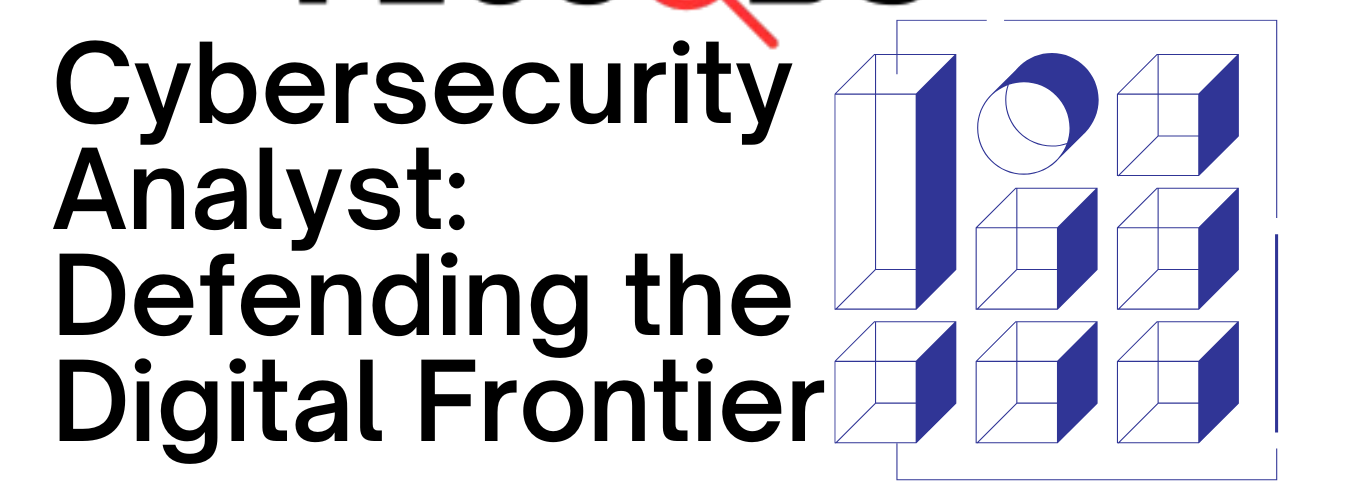
1. Introduction to the Cybersecurity Analyst Role
As industries go digital, the demand for data and system protectors has surged. Cybersecurity analysts are now vital, defending organizations from unseen online threats. Both businesses and individuals now know the severe impacts of cyberattacks. This has boosted the need for these experts.
A cybersecurity analyst safeguards networks, systems, and data from unauthorized access and attacks. They identify, reduce, and prevent risks. They are the first line of defense in an organization’s digital space.
2. Importance of Cybersecurity in the Digital Age
As we use digital platforms more, cyber threats grow. Malicious actors evolve their strategies, from ransomware to identity theft. This puts individuals, companies, and governments at a constant risk.
**Cybersecurity Analysts: Protecting Organizations** Cybersecurity analysts predict, spot, and counteract risks. They safeguard data. They also ensure smooth operations and maintain client trust. They protect the organization’s reputation.
3. Primary Responsibilities of a Cybersecurity Analyst
Monitoring and Analyzing Network Traffic Cybersecurity analysts check network traffic in real time. They analyze patterns to detect signs of a breach. This constant vigilance allows for quick responses, minimizing potential damage.
Detecting and Mitigating Security Breaches When a security incident occurs, cybersecurity analysts act. They work to contain breaches, mitigate their impacts, and prevent further exploitation.
Analysts conduct system vulnerability assessments to remain proactive against threats. Through rigorous testing and ethical hacking, they uncover weak points that need fortifying.
Cybersecurity analysts install measures to protect against threats. They configure firewalls and update anti-malware software to create secure digital environments.
Collaborating with IT and Other Departments Effective cybersecurity is a collaborative effort. Analysts work with IT and other departments. They integrate security into all operations.
4. Core Skills Required for Cybersecurity Analysts
Technical Skills: Coding, Networking, and Encryption. Strong technical skills are key for a cybersecurity analyst. With skills in coding, networking, and encryption, analysts can protect systems. They can also analyze and understand them.
Analytical and Problem-Solving Skills: It’s vital to dissect complex data and find threats. Analysts must have sharp analytical skills to solve problems with speed and innovation.
Security Contexts: Analysts must communicate threats, strategies, and updates to non-technical colleagues. Clear, concise communication is essential for fostering an organization-wide security culture.
Knowing various security tools, like SIEM and IDS, helps analysts solve security challenges.
Cybersecurity analysts must be lifelong learners. They must adapt to new threats and technologies due to rapid technological advancements.
5. Educational Pathways to Becoming a Cybersecurity Analyst
Most cybersecurity analysts have degrees in computer science, IT, or related fields. Specialized certifications further enhance credibility and technical knowledge.
Self-Study and Online Resources. Self-motivated people can use many online courses to develop their skills. This route offers flexibility and a wide range of specialized knowledge.
Internships and entry-level jobs provide hands-on experience. They give aspiring analysts insights into real-world cybersecurity challenges.
6. Essential Certifications for Cybersecurity Analysts
CompTIA Security+ is a basic cert for entry-level cybersecurity skills.
The CISSP is a top cert for seasoned security pros. It focuses on advanced security management and ethics.
Certified Ethical Hacker (CEH): The CEH teaches penetration testing and hacking. It helps analysts think like cybercriminals and improve defenses.
Certified Information Security Manager (CISM) is for those seeking leadership roles. It covers technical skills and cybersecurity management.
7. Career Progression for Cybersecurity Analysts
Analysts start in junior roles. They check and assess things. Then, they advance to senior positions. With experience, they move to roles that involve strategic decision-making.
Cybersecurity careers can lead to architect and manager jobs, beyond analyst roles. In these roles, individuals design security frameworks and oversee security policies.
Leadership in cybersecurity roles involves aligning cybersecurity with business goals. They must balance security with operational flexibility.
8. Challenges Cybersecurity Analysts Face Daily
Evolving Nature of Cyber Threats Cyber threats are fluid and ever-changing. Analysts must adapt and refine their strategies on a continual basis.
Balancing Security and Usability Security measures can reduce usability. So, we must balance them to ensure both protection and functionality.
Staying Updated with Emerging Technologies New technologies introduce both opportunities and vulnerabilities. Analysts must stay current with the latest advancements to remain effective.
Cybersecurity incidents often occur without warning. Analysts must stay calm and decisive under pressure.
9. Tools and Technologies Used by Cybersecurity Analysts
Firewalls and Intrusion Detection Systems (IDS) help analysts. They check and control network traffic. This is vital for detecting malicious activity.
SIEM tools gather data from many sources. They help analysts find patterns, identify threats, and investigate anomalies.
Encryption and multi-factor authentication add security. They help protect sensitive information from unauthorized access.
Threat Intelligence Platforms offer insights into emerging threats. This helps analysts adapt their defenses.
10. The Cybersecurity Analyst’s Approach to Risk Management
Identifying and Assessing Potential Risks. Risk assessment is a core responsibility. Analysts identify potential risks and vulnerabilities, allowing organizations to rank defenses.
Implementing Preventive Measures: Preventive measures, like firewalls and encryption, block attacks. They create strong barriers. Anti-malware software adds to this protection.
Developing an Incident Response Plan is key. Incident response plans outline how to identify, contain, and recover from security incidents.
Risk Mitigation and Control Strategies Analysts create layered defenses. They do this by combining technical measures with policies. This ensures resilience against evolving threats.
Conclusion: The Critical Role of Cybersecurity Analysts in Today’s World
Cybersecurity analysts are vital in our growing digital world. Their expertise protects our data, trust in institutions, and economic stability. As cyber threats grow, cybersecurity analysts will be even more vital. They are the true defenders of the digital world.





Add comment